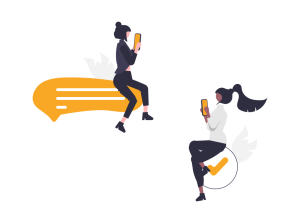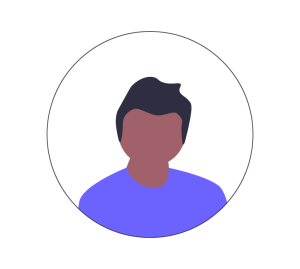
Empathic Blending: Transforming Game Engines
- Blended Learning
This case study discusses strategies for integrating the Game Engines module. The goal was to increase engagement and interaction among students. The lecturer taught a new game engine called Godot, utilizing live streams, Discord, and code modifications to enhance the learning experience. The approach focused on treating students as peers and fostering empathy.
Context
The current case study will describe a specific case that took place in 2023, at the Technological University Dublin (TU Dublin), in the Game Engines 2, a module offered to undergraduate students in Computer Science (4th year students) and Game Design (3rd-yearrdtudents). The module is mandatory for the Game Design students but optional for the Computer Science ones, so the students select it from a list of modules related to the course area.
The transformation of this module into a blended course involved the use of live streams and pre-recorded tutorials. The students have access to high quality material and an extensive list of code examples. This transformation also included a challenging decision. For the last 6 years, Unity was the main game engine taught in this module – however, a new game engine called Godot came to the market, and it is gaining popularity as it is an open-source, freely available, highly efficient tool. Therefore, this new approach to the module of Game Engines 2 also involved including this engine as a resource. Initially, the goal was to teach only Godot, but students asked for some examples also in Unity as the students from the bachelor’s in game design were already used to this tool.
The new blended approach uses empathic teaching as the main strategy. In this approach, students are treated as peers and the teachers put themselves in the students’ shoes to better understand their challenges. This will be exemplified by live stream videos where the teacher goes through the process of learning a new game engine (Godot), showing the students that it can be a long path, with a lot of research and trials and errors. This journey is accompanied by pre-made code examples and tutorials, saving students from going through the rough path of learning something from scratch with no support. The students are also invited to contribute to those examples, by improving the efficiency of the code or identifying bugs. They will also have access to an instant messaging system to share any queries with their teacher or classmates.
The blended approach is especially interesting to the Computer Science students. These students are in the final year of their university course and struggle on balancing all the academic activities, their final course project and the process of job hunting. Giving these students the chance to catch up with the content through the class recordings and pre-recorded tutorials, besides accessing the instant messaging platform to ask questions is a motivation to blend this module.
People Involved
This case study describes strategies adopted in a blended-learning programming module for undergraduate students in the courses of Computer Science and Game Design, at TU Dublin. The teacher in charge of the Game Engines 2 module has been teaching the module for 6 years and have worked on pre-recording videos before, besides making a lot of material available online.
The students who take this module are in their early 20s and aiming to graduate soon. For the Computer Science course, this module is optional, so the students who decide to attend are usually working on a final-year project related to game development or aim to secure a job as a game developer.
The class comprises around 40-50 students. Students are primarily proficient in English (the language used to teach the classes) and have enough digital/technology proficiency to take the course, but most of them have never designed or developed a game before taking the course.
The classes take place in a mix of in person and online approach, with the material available on the Virtual Learning Environment (VLE) adopted by the university. The current approach also includes live streams available on the teacher’s YouTube channel.
Personas (optional). Create personas for your students following the table below, copy the table as many times as needed.
Fictional Name: Vanessa Demographics: 21-22 Non-native speaker | | Fictional Name: Andrew Demographics: 20-21 English
| |
Profession: Full time student | Motivation for joining the course: Secure a job as a game developer | Profession: Full time student | Motivation for joining the course: Learn more about game development for their final year project |
Their challenges as a student:
| Their challenges as a student: – Has a busy routine between work and personal life | ||
How did the transformation help them: – Can review the recordings of the classes even after attending live sessions – Can ask for support from lecturer or peers using the instant messaging system | How did the transformation help them:
| ||
Before the transformation
Before the transformation, the module described in this case study took place fully in person. Although a lot of pre-recorded tutorials and examples were made available, students did not have access to live streams or to the instant messaging system. They also learned another game engine.
The problem being addressed is giving support to final-year students. As this is a busy phase of their course, students might appreciate having access to online tools, such as class recordings, live streams, code examples and instant messaging systems. The empathic approach also aims to boost their confidence as these students will soon start their careers.
The transformation
The module Games Engine 2 includes a mix of in-person and online interactions with the students, in a mix of lecturer’s presentation and hands-on activity. The whole module is taught once per week over 13 weeks. The following activities will be implemented in the blended approach:
Live stream
Tutorials will be live streams and made available on YouTube. This will include the teacher’s process when learning a new game engine to show the students this can be a challenging path even for experienced developers.
Code examples on GitHub and students pull-requests
Examples of code will be provided on Github, a platform for developers. Students will be allowed to make pull requests, which consist of changes, reviews and improvements on the code provided. Students are considered peer developers in this process.
Messaging system
Discord is an instant messaging platform highly used by younger users and gamers. This platform will contain different channels where students can discuss the topics of the module, ask questions, share ideas and examples, and interact with the classmates and the teacher.
After the transformation
The initial feedback was based on students’ interaction on Discord, besides their interaction in the live streams and with the videos available. Students seem to appreciate the messaging channel and the possibility of sharing their queries with their peers. Students were also enthusiastic about the possibility of making changes to the code, practising and sharing their knowledge.
Technologies Employed
Tools for blended learning included a laptop with a camera, microphone, and an internet connection to facilitate Zoom connectivity.
Bongo is a solution integrated into the VLE adopted by the university. It provides an environment where the lecturer can broadcast their classes, record the sessions, and interact with the students via web chat.
Discord is an instant messaging social platform where students can communicate using voice calls, video calls, text messaging, media and files in private chats or as part of communities called severs. Different channels can be opened on Discord for students to discuss with their peers and their lecturer about topics covered in the module.
Github is a hosting service for software development, where the lecturer can make code examples available and students can interact with those by making modifications and sharing their contributions to the code. This platform is widely used by companies for a collaborative coding process.
YouTube is an online platform for video sharing. Live streams and pre-recorded videos of tutorials were made available by the lecturer on this platform.
Reflections
Challenges Faced

Issues related to internet stability and online distractions were encountered. Internet connection problems led to disruptions during class sessions. Younger students (aged 10-11) seemed to get distracted more easily when learning online. Addressing this issue requires a more dynamic and personalised approach to theoretical explanations, such as including students’ names in exercises, to reduce distractions.
Initially, the goal was to move from Unity (a game engine taught in the past) and cover only Godot (a new game engine). However, some students were already familiar with Unity and asked for examples from that game engine to be also provided. Although this was not the initial plan, it was also not an issue as the lecturer had many tutorials and code examples from when the module was taught in previous years.
What went well?


Alternatives
In the future, students will also be encouraged to work on their own video tutorials, showing their learning process. This can also boost their confidence as game developers and help them to register their learning process and create their own resources for future reference.

Costs
No financial cost was involved in the blending of this module. All the tools used were available for free. Although a considerable amount of time was spent preparing the tutorial recordings and code examples, all the assets can be re-used in further teaching.

Effectiveness
The transformation contributed to achieving the learning outcomes. Students who could not attend the live sessions managed to access the recordings. The empathic approach also helped to build their confidence as future game developers, besides increasing the interaction with their peers and the teacher.


